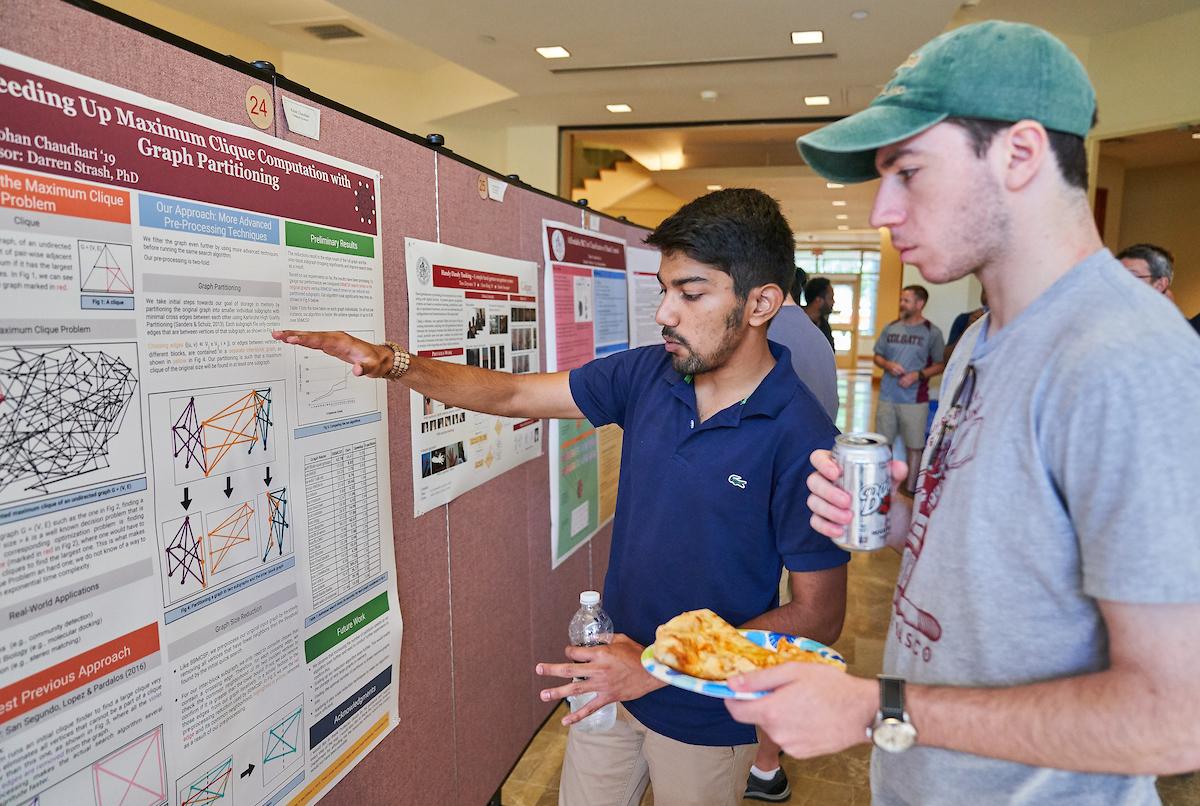For Colgate students, summer signals opportunities for intellectual growth outside of the classroom, career preparation, and the exploration of new interests.
Last week, two poster sessions showcased the rigorous research that students of all class years have pursued throughout the summer. Research topics ranged from “Ghost Imaging” and “Orienting Refugees to New Lives” to “Six Minutes to Lights and Sirens: Ambulance Chute Time Analysis” and “Social Justice Teaching in White Rural Spaces: Teacher Preparation at Colgate.”
Students were able to collaborate with faculty and with the Upstate Institute as Field School Fellows to complete their research. Jin Huh ’19 worked with professor Kiko Galvez of physics and astronomy to reproduce results of prior studies and gain a more thorough understanding of the fundamental physics behind ghost imaging, an optical technique used to produce an image without having the object directly in front of the camera. In this research, he employed a combination of entangled photons, or light particles, and the basics of quantum physics to form small images.
“I had a lot of hands-on experience with experimental setup from which I learned practical imaging techniques and program coding,” Huh said. “This project will be the foundation for my senior thesis and for my future career into quantum mechanics or optics.”
Valerie Rome ’21 analyzed the reaction conditions during the synthesis of BOPHY, a newly discovered fluorescent chromophore, to gain more research experience and strengthen her laboratory skills.
“This experience made me very passionate about my research and taught me what I need to do — as far as effort and quality of work — for my research to yield significant results. This summer research further prepared me for a career in medicine.”
Amanda Hauser ’19, a cellular neuroscience major who plans to continue working in emergency management after medical school, applied for an Upstate Institute fellowship because of her volunteer background as an EMT.
Hauser hopes her project, which analyzed data from the 911 center to determine the length of time between an emergency call being received to the ambulance departure time, will benefit the response efforts of nearby towns.
“I am looking forward to the changes that Emergency Management is making with the dispatch policy and mutual aid plan. These changes will help the whole county with response times to emergencies,” she said. “The data from my project will help to push these changes forward in county government.”
